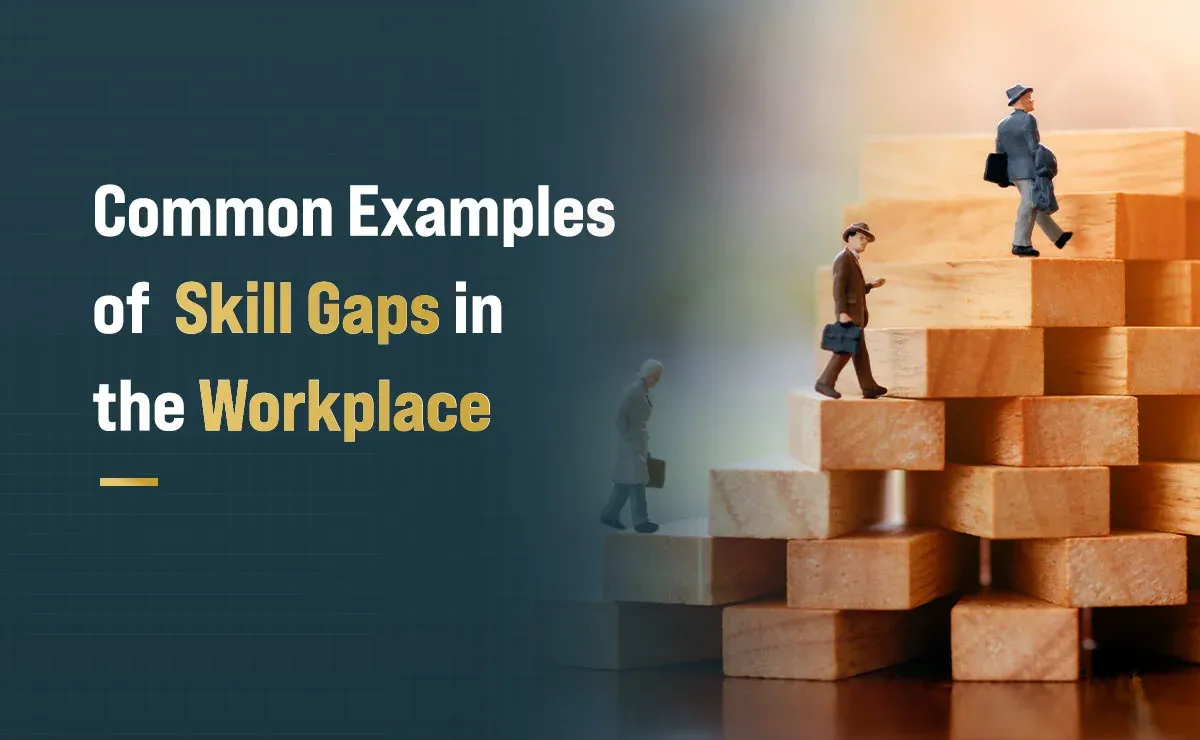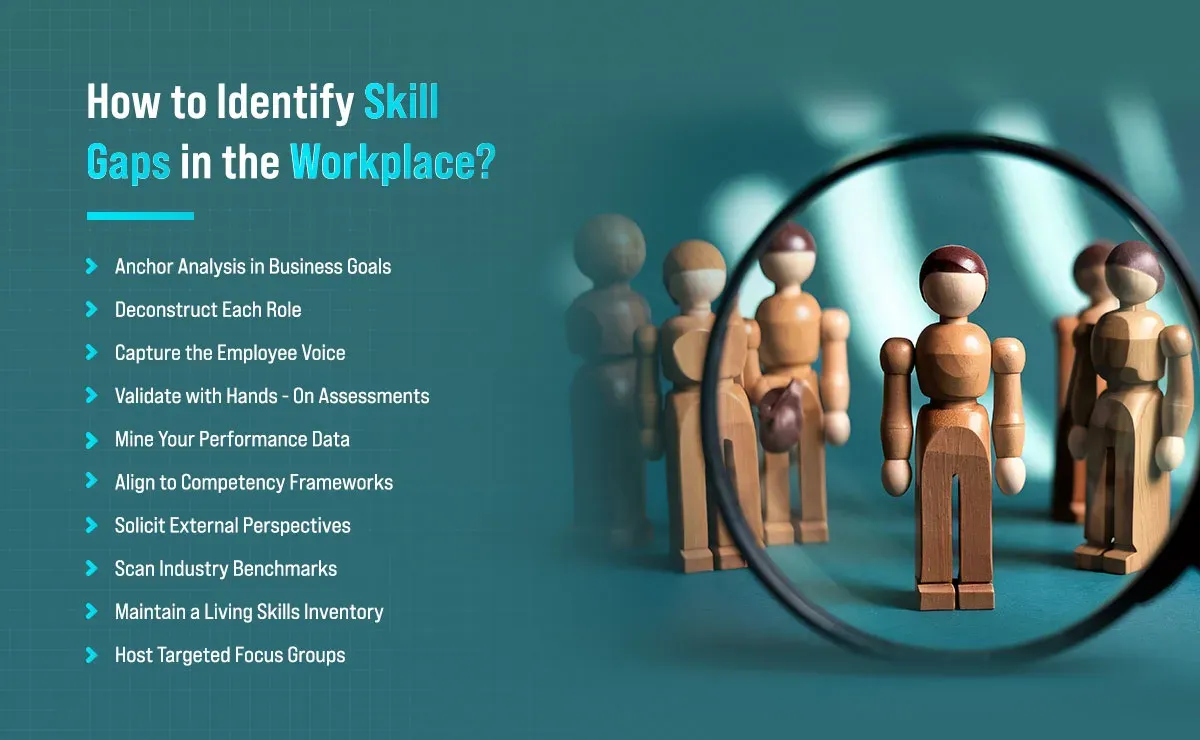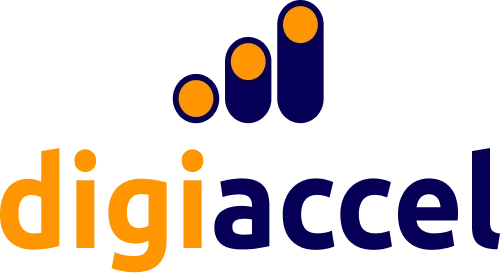How to Identify Skill Gaps in the Workplace?

In a world defined by technological disruption, shifting market demands, and evolving business models, having a workforce with the right skills isn’t just a competitive advantage but an absolute necessity. Yet even the most forward‑thinking organizations struggle with underlying skill gaps that erode productivity, stifle innovation, and hinder employee engagement.
A skill gap is the disparity between an employee's existing abilities and the competencies required for peak performance. This gap can emerge for a host of reasons, like technological change, organizational restructuring, talent attrition, or simply outdated training programs.
This article explores a clear understanding of what skill gaps are, why they matter, and most importantly, how to identify them systematically so you can bridge them proactively.
What Is a Skill Gap?
A skill gap arises when an employee (or team) lacks the necessary proficiency to fulfill their role efficiently. Unlike broader terms such as “competency” or “capability,” skill gaps focus narrowly on discrete abilities, which are both hard skills (such as data analysis, software development, or machinery operation) and soft skills (such as critical thinking, communication, or leadership).
Key Characteristics of Skill Gaps:
- Observable and Measurable: Skill gaps aren’t vague; they’re grounded in data. Whether through standardized assessments, real‑world simulations, or on‑the‑job performance metrics, you can pinpoint exactly where proficiency falls short of predefined benchmarks.
- Role-Specific: Every position demands its own unique blend of abilities. The skill gap for a software engineer, say in algorithmic design, looks very different from a gap in client‑consulting skills for an account manager. Skill‑gap analysis helps zero in on the precise capabilities each role requires.
- Dynamic: As technologies advance and business strategies shift, the relevance and priority of certain skills change. What was once “nice to have” (e.g., basic automation knowledge) can quickly become mission‑critical, which is why your skill gap analysis must adapt in real time.
- Costly When Neglected: Unchecked skill gaps translate directly into organizational pinpoints like projects slipping, quality degrading, and morale dipping. In contrast, closing these gaps not only averts costly mistakes but also supercharges productivity and employee engagement.
Understanding and defining what you mean by “skill gap” lays the groundwork for all subsequent analysis.
Common Examples of Skill Gaps in the Workplace
While organizational needs are unique across different sectors, certain skill shortages consistently surface across industries, each carrying real-world consequences and untapped opportunities.

- Digital Fluency: As businesses embrace cloud platforms, automation, and collaboration suites, employees who struggle with basic digital tools can become a problem. Bridging this gap empowers your teams to onboard new software seamlessly, troubleshoot minor issues independently, and fully leverage the technology investments you’ve made.
- Data Savvy: In the era of big data, raw numbers mean little without the ability to analyze and interpret them. A workforce lacking data‑analysis skills risks slow, guess‑driven decisions. Upskilling your people in data visualization and statistical reasoning transforms information into insights, fueling innovation, optimizing processes, and sharpening your competitive edge.
- Project Leadership: Effective project managers do more than track tasks; they anticipate risks, align stakeholders, and deliver outcomes on time and on budget. When these competencies are missing, initiatives stall, costs rise, and internal confidence erodes. Bridging this gap guarantees that key initiatives remain aligned with and meet their strategic goals.
- Critical Thinking: Standard operating procedures only go so far in novel situations. Employees who lack the ability to dissect challenges, identify root causes, and propose creative solutions are more likely to resort to trial‑and‑error or escalate problems unnecessarily, stalling progress.
- Clear Communication: Clear, concise writing; active listening; persuasive presentations; and cross‑functional teamwork are foundational to every role. Gaps here lead to misunderstandings, redundant effort, and fractured working relationships, especially in distributed or hybrid environments.
- Empathetic Leadership: Managing people isn’t just delegating tasks; it’s inspiring, coaching, and navigating conflicts with emotional intelligence. Leaders who master empathy and self‑awareness foster higher engagement, reduce turnover, and cultivate a culture of psychological safety.
- Emotional Resilience: Change is inevitable. Employees who embrace new challenges, bounce back from setbacks, and maintain optimism become anchors of organizational agility. Strengthening resilience helps your workforce adapt more quickly to market shifts and emerging disruptions.
- Influence & Persuasion: Whether convincing internal stakeholders to fund a project or closing deals with external clients, the art of persuasion grounded in value articulation, objection handling, and relationship building is indispensable. Gaps here translate directly into lost revenue and stalled initiatives.
By recognizing and addressing these high‑leverage skill gaps, you not only eliminate performance bottlenecks but also unlock accelerated growth, stronger engagement, and a culture built for tomorrow’s challenges.
The Importance of Analyzing Skill Gaps in the Workplace
Conducting a rigorous skills gap analysis is far more than a formality; it’s a strategic imperative that delivers measurable value across your organization. Here’s why investing in this insight pays dividends on multiple fronts:
- Highlights Hidden Strengths and Deficiencies: A systematic gap analysis transforms anecdotal hunches into hard data. By mapping each role’s required competencies against current proficiency levels, you gain a granular view of where your teams excel and where critical shortages emerge. This precision ensures corporate training addresses actual gaps rather than assumed shortcomings.
- Maximizes L&D ROI: Generic training programs often generate modest improvements and low completion rates. In contrast, skill gap‑driven curricula are purpose‑built to address precise skill deficits. Learners see immediate relevance with increased engagement that translates to more value for each and every training dollar.
- Elevates Recruitment and Succession Planning: Understanding which skills are in short supply guides smarter hiring decisions. Rather than chasing ever‑changing job titles, recruiters can focus on specific competencies like advanced data analytics, project leadership, or emotional intelligence, ensuring new hires hit the ground running. Similarly, succession plans anchored in skills data identify which high‑potential employees need targeted development to step into critical roles.
- Sharpens Competitive Advantage: As digitization and automation accelerate, a workforce lacking key technical or interpersonal skills risks falling behind. Research by McKinsey shows 87% of organizations anticipate skills gaps in the coming years, with 43% already feeling the pinch. By proactively closing these gaps, you maintain agility, seize market opportunities faster, and outpace competitors who react only after problems emerge.
- Builds Resilience in a Changing Environment: The World Economic Forum has addressed the growing need of reskilling and upskilling to meet the demands of a rapidly changing world. A robust gap analysis program ensures you don’t merely retrofit yesterday’s skills but systematically prepare your teams for the next wave of innovation in AI integration, advanced automation, and remote‑first collaboration.
- Drive Measurable Business Outcomes: When critical skill gaps remain unaddressed, organizations incur hidden costs like extended project cycles, increased error rates, and higher customer churn. Conversely, companies that align their workforce capabilities with strategic objectives see tangible improvements in productivity, customer satisfaction, and revenue growth.
By embedding skills gap analysis into your standard operating rhythm, you’re not just solving today’s training challenges but also future proofing your entire organization.
How to Identify Skill Gaps in the Workplace?
A focused, multi‑dimensional approach to skill analysis ensures you uncover the precise skills your teams need to thrive. Below is a streamlined, ten‑point roadmap for L&D leaders and HR teams:

1) Anchor Analysis in Business Goals
Start by mapping both your short‑term targets (e.g., product launches next quarter) and long‑term ambitions (e.g., expanding into new markets over the next two years). For each objective, list the critical skills, both technical and soft, that will make success possible. Revisiting these goals quarterly keeps your gap analysis aligned with shifting priorities.
2) Deconstruct Each Role
Don’t rely on generic job descriptions. Interview frontline employees and their supervisors to build a detailed profile of every position, including their core responsibilities, day‑to‑day tasks, and decision‑making authority. This collaborative “job role audit” surfaces nuances that static titles often miss.
3) Capture the Employee Voice
Deploy anonymous surveys, one‑on‑one interviews, or digital feedback forms to learn where employees feel underprepared. Pair these insights with managers’ perspectives to balance self‑perceptions and observed performance. The comparison often reveals blind spots in skills the employees usually overestimate or underestimate.
4) Validate with Hands‑On Assessments
Leverage a mix of online quizzes, real‑world simulations, and practical tests to measure actual proficiency. Rotating formats like multiple choice, scenario‑based challenges, or live demonstrations cater to diverse learning styles and provide a richer accuracy check than any single method.
5) Mine Your Performance Data
Tap into project dashboards, quality‑control logs, and customer‑support metrics. Is there any certain team that consistently misses deadlines? Is a spike in defect rates tied to a particular process? Visualizing these trends over time helps pinpoint where skill shortfalls manifest in real business outcomes.
6) Align to Competency Frameworks
Adapt to industry‑standard frameworks that spell out the knowledge, skills, and behaviors required for each role. Benchmarking against these models ensures your criteria match global best practices and keeps your analysis from drifting into subjectivity.
7) Solicit External Perspectives
Clients, suppliers, and other partners often spot capability gaps before you do, especially when customer success or handoffs are involved. Invite them into a structured feedback session or periodic check‑ins to capture these external insights.
8) Scan Industry Benchmarks
Stay plugged into professional development associations, online forums, and industry newsletters. When emerging tools or methodologies become mainstream, flag them as potential skill requirements and update your analysis accordingly.
9) Maintain a Living Skills Inventory
Centralize your findings in a database, which can be anything from a specialized platform to a well‑structured spreadsheet. Update it at least twice a year, so managers can instantly see who needs upskilling and where new hires are required.
10) Host Targeted Focus Groups
Finally, bring together cross‑functional focus groups mixing seniority levels, departments, and backgrounds to discuss specific challenges. These candid conversations often uncover nuanced gaps in collaboration, communication, or emerging technical areas that quantitative data alone might miss.
By weaving together strategic objectives, direct feedback, objective testing, and external benchmarks, you create a 360° perspective on your workforce’s capabilities that helps empower your organization and invest precisely where it matters the most.
Summing Up
Identifying skill gaps is an ongoing strategic practice that drives performance, engagement, and innovation. By aligning your analysis with business objectives, you can build an actionable roadmap for targeted upskilling and recruitment. This process not only resolves immediate challenges such as missed deadlines and quality issues but also ensures your organization stays adaptable as market demands and technologies evolve.
Regularly updating a centralized skills inventory and conducting quarterly reviews will keep your workforce aligned with future needs. When you invest in understanding and closing critical skill gaps, you turn potential vulnerabilities into opportunities for growth, resilience, and long‑term success.

